One month before shutting down his lab, Paul Modrich looks back to his pathway to Nobel
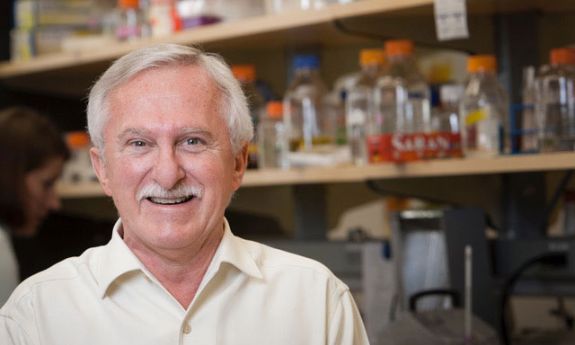
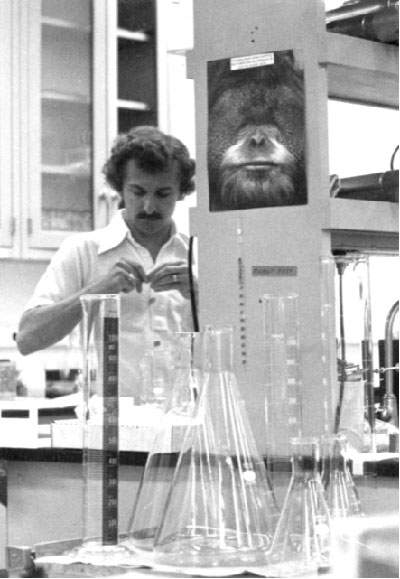
Q: Have sports played any role in your science?
Paul Modrich: Not really. My interest in science was always there, and I'm not sure exactly where it came from. Where I grew up in Northern New Mexico was very rural and quite beautiful. The evening skies were spectacular, jet black on moonless nights, and you could easily see the Milky Way. My guess is that environment had a lot to do with my developing interest in science.
Q: Do you remember what career dreams you had around the time when you were performing the isotope experiments?
Paul Modrich: When I was a child, our access to outside information was primarily through newspapers, magazines, and a local radio station. We did not have a TV until I was 13 or 14 because the mountains blocked the signals. Outside of school, most of what we did as children was based on our imaginations. At the time, I didn't know much about how science worked, but I wanted to try a few things. During my freshman year I came across an advertisement in “Scientific American” for a set of radioisotopes that you could purchase in those days without a license. I asked my father to order them for me, which today would be absolutely impossible…
Q: I liked the message your father received when the isotope package arrived. From your autobiography published on the Nobel Prize website, “about two weeks later he received a call from the freight manager at the train depot informing him that they had a package addressed to him that was labeled radioactive and with the admonishment “Do not stand within 15 feet of this parcel unless absolutely necessary.”
Paul Modrich: (Laughing) I germinated seeds and put leaf cuttings in several of them, injected others into frogs and then exposed them to x-ray film. When I told my wife Vickers about these experiments, it was pretty clear that she didn't believe me. When my mother passed away, we were going through her things and Vickers found the notebook summarizing those experiments that I put together at the time. That notebook is now in the Nobel Museum.
Q: And this was your first research notebook. Who taught you to keep a research notebook?
Paul Modrich: No one. It was how I imagined it should be done. And it was not bad, looking at it today.
Q: I find it fascinating how, before the internet era, people often needed to reinvent the wheel…
Paul Modrich: Yes, especially people living in blue-collar rural areas. The town where I grew up had about 8 000 people and as I said, was pretty isolated both physically and in terms of communication. As a consequence, the kidswere left to their own devices. When I went to a regional science fair, I discovered that the students from Los Alamos High School had access to the surplus pile from the National Laboratory located there. Of course, we had nothing like that.
Q: You did not have the resources, but you did have your imagination! And this was not less important…
Paul Modrich: Yes, imagination is very important, and my guess is that imaginative play during childhood contributes in an important way to the development of creativity. Young people today have access to all sorts of electronic devices that give them the kind of diversion that we found in play.
Q: Did you know at that time that science would become your life?
Paul Modrich: I hoped so.
Q: How far you thought you would go?
Paul Modrich: I had no idea. I applied to colleges with science in mind: to the University of Colorado, where my father had gone, and to the University of Iowa, where he got his master’s – because I knew he liked these schools. But I also applied to Caltech (California Institute of Technology) and MIT because I knewthey had great science programs. I got into all except Caltech. I decided to go to MIT but I didn't appreciate at the time what that meant. Coming from a little town in New Mexico, my arrival in Cambridge was a total culture shock.
Q: And you needed to work at a grill to supplement the scholarship and loan support…What was most shocking to you?
Paul Modrich: It was the first major urban area I experienced. A real challenge for me was the fact that the majority of the students at MIT came from private schools and large urban high schools, where they'd had more advanced courses than I did. So I was behind academically.
Q: How hard it was?
Paul Modrich: The first semester was very difficult. For example, most of my colleagues had introductory calculus credits, but I didn't know what a derivative was. I had to work hard to catch up, and I managed to do that.
Q: And from MIT, you left for Stanford…
Paul Modrich: At MIT I became interested in molecular genetics, especially the nature of mutations and genetic recombination. It seemed clear to me that these phenomena could be understood only in terms of DNA biochemistry. So, I went to the Stanford Biochemistry Department for my graduate degree because some of the premier work in this area was being done there
Q: You mention in your Nobel bio the importance of your mentor Bob Lehman, while you were in his lab. What did you like most about his mentoring style?
Paul Modrich: Stanford Biochemistry was a very small department with only seven faculty members. It had been founded by Arthur Kornberg, who discovered DNA polymerase, the enzyme responsible for DNA synthesis, for which he received the Nobel Prize in 1959. I was particularly impressed by the work going on in Bob Lehman's lab. Shortly before my arrival at Stanford, his lab was one of several that had discovered an enzyme called DNA ligase that could seal a break in a DNA strand. I joined Bob's lab as a graduate student in the spring of 1969, where I set about studying the mechanism and biology of this new class of enzymes. Bob is a wonderful scientist, and the environment in his laboratory and in the Department were major factors in my early scientific development. Bob allowed the people who worked for him a great deal of freedom in terms of what they did in the laboratory. He gave you a problem, and what you did with it was pretty much up to you. This trust and independence allowed me and others in the lab the opportunity to develop our own scientific styles - to learn that we could actually do it ourselves. So, I think it's fair to say that much of the foundation for the way I think about science developed at Stanford. This sort of thinking was reinforced during the postdoctoral year I spent with Charles Richardson at Harvard Medical School studying DNA replication. I regard that year as one of the most enjoyable experiences of my career.
“I've always enjoyed the process more than the outcome.”
Paul Modrich
Q: The time you spent with Bob Lehman and Charles Richardson helped you discover your style as a scientist. How would you describe it?
Paul Modrich: First, I am an experimentalist. The physicist Richard Feynman said that "the test of all knowledge is experiment," and I've always regarded myself as an experimentalist. You can spend a lot of time talking about an idea, or you can do the experiment. If well designed, an experiment can give you the truth. And I've always enjoyed the process more than the outcome - picking a problem, designing an experimental approach, and the little day to day things that go along with that, like someone coming to you with an interesting result. I tend to lose interest once the answer becomes apparent.
Second, the scientific problems that would prove to be of long-term interest to me. While in Bob's lab, I developed an interest in DNA replication, and I did my postdoc in that area. I also became interested in how proteins are able to recognize rare sites in DNA. Gene expression, for example, was known to be controlled by proteins that recognize rare DNA sites. I was curious how this might work, both in terms of the molecular interactions responsible for recognition and how such proteins manage to locate those rare sites in a huge background of other DNA. A human cell contains 6 ft of DNA! How does a protein search a huge background of DNA to find the particular sites it's looking for? These questions were of interest to me …
Q: And led to the Nobel Prize.
Paul Modrich: Yes. (Laughing)
Q: When did you start your research in mismatch repair?
Paul Modrich: A mismatch is a DNA lesion that involves incorrectly paired Watson-Crick bases. In 1964, when I was a senior in high school, Robin Holliday suggested that recognition and repair of a mismatch could account for a recombination-associated phenomenon called gene conversion. This prompted genetic studies in both pneumococcus and E. coli that clearly showed that mismatches are recognized and processed in cells. Some of that work suggested that inactivation of mismatch repair results in a large increase in the production of mutations, the primary cause of inherited disease and probably most cancers.
Matthew Meselson at Harvard, who was studying mismatch repair in E. coli, put all of this together. He suggested in 1976 that although prior work on the pathway was based on its recombination function, perhaps the primary role of mismatch repair is to correct DNA replication errors. This would account for the increased mutation production when the pathway was inactivated. When DNA replicates, the two strands of the DNA helix separate, and two new strands are synthesized using the separated parental strands as templates. We now know how accurate this copying process is. In human cells, the enzymes responsible for the bulk of DNA synthesis make about one mistake for every million to 10 million base pairs copied. But since human cells have 6 billion base pairs, that’s a lot of mistakes. Meselson suggested that mismatch repair might be involved in correcting these DNA replication errors, which would otherwise become mutations. He pointed out that to do this, the repair system would have to be able to do two things: recognize the presence of the replication error in the form of a mismatched base pair and distinguish the new DNA strand that contains the mistake from the parental strand that does not. He suggested that this could be accomplished by the utilization of secondary signals in the helix to identify the new strand. In other words, Meselson suggested a repair system that would recognize a mismatch located at one point on a DNA helix and correct that error on the new strand as dictated by a secondary signal located elsewhere on the DNA molecule. This was the first time anyone had suggested a genetic process involving two discrete DNA sites. And that fascinated me!
We were working on something called EcoRI restriction endonuclease at the time. Based on some work done in the restriction enzyme area by Norton Zinder at Rockefeller University, I had an idea for a biochemical assay that might permit us to detect mismatch repair in the test tube - in extracts prepared from broken cells. If we could do that, we could identify the proteins involved and figure out what they do. A-Lien Lu, a postdoc in the lab who had done some nice work on the EcoRI enzyme, came to me in 1981 and said she’d like to work on something else. I suggested mismatch repair. I'd suggested this possibility to several others, but A-Lien was the first to take me up on it. Within a relatively short time, she demonstrated strand-directed mismatch repair in extracts prepared from broken E. coli cells. This permitted us to identify and establish the basic functional roles of the proteins involved in the E. coli pathway. We subsequently showed that human cells have a similar repair system and identified many of the components of that pathway as well. During the course of this work, we showed that the human pathway is inactivated in tumor cells from patients with Lynch Syndrome, the most common form of hereditary colon cancer. We also identified mismatch repair defects in cells from certain sporadic cancers that behaved a lot like Lynch syndrome tumors. But unlike Lynch cancers, which contain mutations in mismatch repair genes, the mismatch repair genes in these sporadic cancer cells are normal. Collaborative experiments with Sandy Markowitz's lab at Case Western Reserve University resolved this puzzle, showing that a mismatch repair gene called MLH1 was turned off in these sporadic cancers. The gene is normal - it's just turned off by epigenetic silencing, resulting in a mismatch repair defect. Together, Lynch syndrome and MLH1-silencing are believed to account for about 15% of colon and endometrial cancers.
Q: Have you collaborated with Tomas Lindahl and Aziz Sancar?
Paul Modrich: I've had the pleasure of collaborating with Aziz on several occasions, and we have a couple of papers together. Although I've known Tomas Lindahl for almost 40 years, we've not had the opportunity to collaborate.
“Mentors played a key role in my career success.”
Q: Were you expecting to be awarded the Nobel Prize?
Paul Modrich: (Laughing) No. First, what are the odds of winning a Nobel Prize in chemistry? If you look at how many chemists and biochemists there are out there, the probability is near zero.
Q: But you were aware of the importance of what you were working on, weren’t you?
Paul Modrich: I felt it was important. But it’s up to others to decide how important it really is. That is the key question: how important is it really? (Laughing)
Q: What were you doing when the Prize was announced?
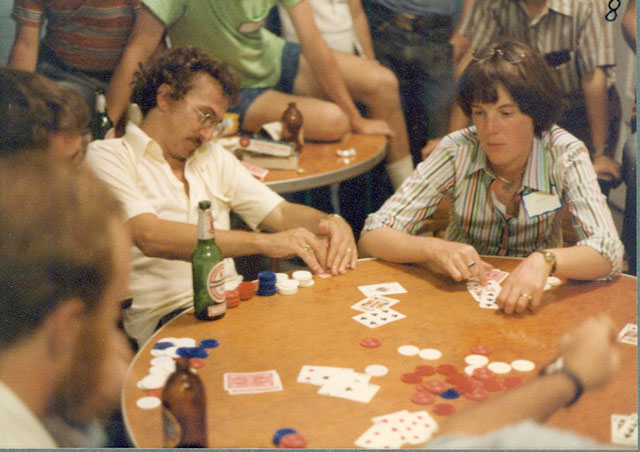
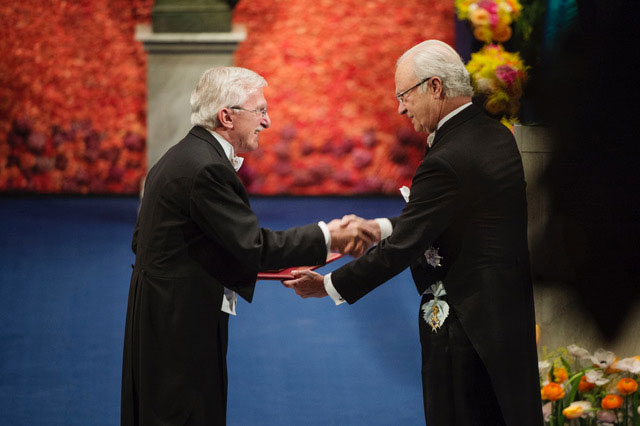
Paul Modrich: (Laughing) We were at our cabin in New Hampshire. We usually go there in late September or October because the foliage at that time of year is breathtaking. The Nobel Committee calls the winners in the early morning, about 6:00 AM on the East Coast, I guess, but they were unable to reach us because they didn't have my cell phone number. I learned about the Prize from a congratulatory cell phone message from one of my former postdocs. When we returned home, our landline voicemail was completely full of calls from the Chemistry Committee in Stockholm. It was very interesting…And then your life changes...
Q: How did your life change after the Nobel Prize?
Paul Modrich: You get constant invitations to give lectures. You could spend much of your life flying around. It’s been six years, and I still get several invitations a week. I am not particularly fond of traveling. If a friend invites me or if a place appeals to me, then I may go, but my standard answer is no.
Q: You are a celebrity, Dr. Modrich!
Paul Modrich: Being a celebrity was never one of my life goals.
Q: What were, in your view, the most important factors in your scientific success? How serendipitous was your life?
Paul Modrich: Other than the occasional experimental surprise, which can be quite exciting, there has been little serendipity in my scientific life. In terms of my career in science, my time at MIT was very important because it was there that I was initially exposed to molecular genetics, which became my life interest. The other important factors were people. I learned to do science working with Bob Lehman at Stanford. I was also extremely impressed by Charles Richardson's science and the manner in which he ran his lab. Bob and Charles had both done their postdocs with Arthur Kornberg, one of the fathers of DNA biochemistry, and Arthur was also extremely supportive during my career. The fourth person who had a lot of influence on my early career development was Jim Wang, who was then at the University of California, Berkeley, and whom I met when he did a sabbatical at Stanford. Jim had discovered the first DNA topoisomerase. The job of this type of enzyme is to untangle DNA molecules and control DNA topology. As I said, there are six feet in DNA in each human cell, and these molecules get tangled for various reasons. I regarded this as a stunning discovery. Jim and I became friends, and I went to the Berkeley Chemistry Department for my first faculty position because he was there.
Q: So, it is truly mentoring which played a key role in your success.
Paul Modrich: It always does. But I think mentoring is a new term which for me doesn't embody the whole picture. I would call it teaching and learning from people whom you know and respect. The support that young scientists receive from more senior individuals clearly plays a very important role in their career development.
“If I'd have stayed there, I could have become a coal miner, cowboy, teacher, clerk, lawyer, or doctor. That was it.”
Q: What is your style of teaching others?
Paul Modrich: I try to do what worked for me. I suggest a problem to a new student or postdoc and try to allow them as much freedom as possible. I generally try to let people do their own thing unless I feel that they are drifting off on a tangent that looks like it has little probability of going somewhere.
Q: How realistically ambitious can a scientist from a low-resource setting be? Can a scientist from Croatia, the place of your ancestors, or from Romania, where I come from, reach for the Nobel?
Paul Modrich: This is an important question that relates to my experiences in New Mexico. I love the area where I grew up. It's one of my favorite places in the world. My wife and I go there once or twice a year. But if I'd have stayed there, I could have become a coal miner, cowboy, teacher, clerk, lawyer, or doctor. That was it. There were no other options. I knew I had to get out of there if I wanted to be a scientist. Countries like Croatia and Romania are both part of the EU, which has elaborate support systems for science. I don't know how that money is distributed. My guess is that funding probably favors the more technologically developed metropolitan areas, as it does in the US. NIH dollars tend to go where you might expect: the east and west coasts and the upper mid-west. Texas and Colorado are probably the two exceptions. Coming back to your question, scientists need two things: research funds and a stimulating intellectual environment, smart people with whom they can share their interests -so they tend to go where that kind of environment is.
Q: How do you think your field will progress in the next decades?
Paul Modrich: The DNA repair field is fairly mature, but it's still extremely active, especially those areas dealing with double-strand break repair and transcription-coupled repair. And I think it likely that we'll be seeing new things, particularly in terms of functional and genetic consequences of the action of the various DNA repair systems. The general field molecular genetics has been revolutionized by the development of CRISPR-Cas systems as tools for genetic manipulation that offer the potential for treatment of hereditary disease. While ethical concerns currently preclude embryonic modifications, systemic treatment of affected individuals is being pursued as a viable option. It's also interesting to note that genetic modification using CRISPR-Cas relies on cellular DNA repair systems to complete the process.
Q: How do you think that this will change the way we look at death, life, and aging?
Paul Modrich: I don't know, but I do have personal views on aging and death. Death is nature's way of providing for renewal and for evolution. I'm 75 and indeed happy to be alive, but our aging population has created problems that we're all aware of and that society is going to have to deal with.
“I find the idea of a benevolent power personally comforting.”
Q: Do you believe in God?
Paul Modrich: Many scientists do not, but I happen to be one that does. I've not participated in organized religion for more than 50 years, so it's a personal thing. There is so much beauty and elegance in nature, and it really doesn't have to be that way.
Science is strictly observational. It describes the way things are. Physics tells us about the composition of the universe and the parameters that govern its function. But it doesn't tell us why - for example, why the speed of light is 186,000 miles a second as opposed to some other value. I read in some popular science magazine - maybe Sky and Telescope - that if one of the parameters that governs universe function were to vary even slightly from its actual value, the universe as we know it would not exist. I suppose it's conceivable that over infinite time, nature may have tested all possible values of these parameters to come up with universes that actually work, but there are other possibilities. And I find the idea of a benevolent power personally comforting.
Q: Do you have a book to recommend to me? A book that inspired you in your reflections about nature and the mystery of life?
Paul Modrich: My favorite author is probably John Steinbeck. I've also enjoyed Joseph Conrad. Most of the stuff we currently read is not of that caliber, but during the past several years, I've particularly enjoyed the novels of Amor Towles and Delia Owens.
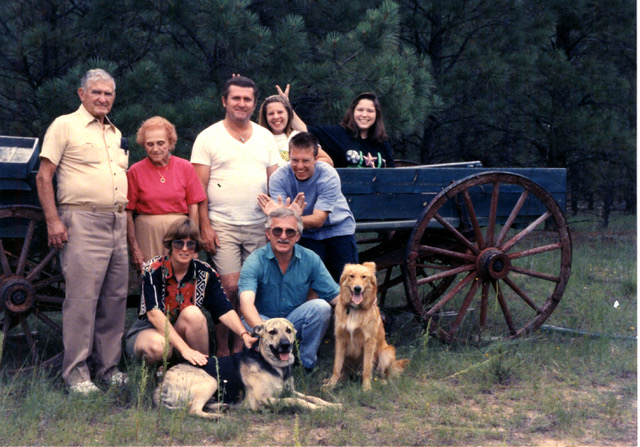
1987 family photo. front row: Paul Modrich with his wife Vickers Burdett. 2nd row – Paul Modrich’s father, mother, brother, and son Adam. 3rd row- Paul’s daughter Amy and niece.
Q: What are, in your view, the main integrity challenges in your research area today?
Paul Modrich: I think science is intrinsically self-correcting. Can you teach honesty? I am not sure that you can. I have always believed that a laboratory must be a place of implicit trust - that if you introduce even a hint of distrust, you may compromise the atmosphere that fosters creativity.
Q: But we can teach scientists about resources and good practices, can’t we?… What could institutions do to best train the next generation of scientists?
Paul Modrich: Teaching best practices is certainly appropriate. And conducting this training outside the laboratory context, as is currently done, avoids the trust concerns that I mentioned.
Q: One essential piece of career advice for a young scientist….
Paul Modrich: I'll mention three: Choose your doctoral and postdoctoral advisors with great care. Be interested in what's going on outside your research field. And for those who pursue a career in academic science, choose a problem that your regard as important and relatively undeveloped, and pursue it in depth - avoid jumping around in ways that only add incrementally to areas that others have largely developed.
Q: What are your next scientific goals? What are you working on now?
Paul Modrich: Retirement! I've been doing this for a long time and plan to close the lab in December and retire in June.